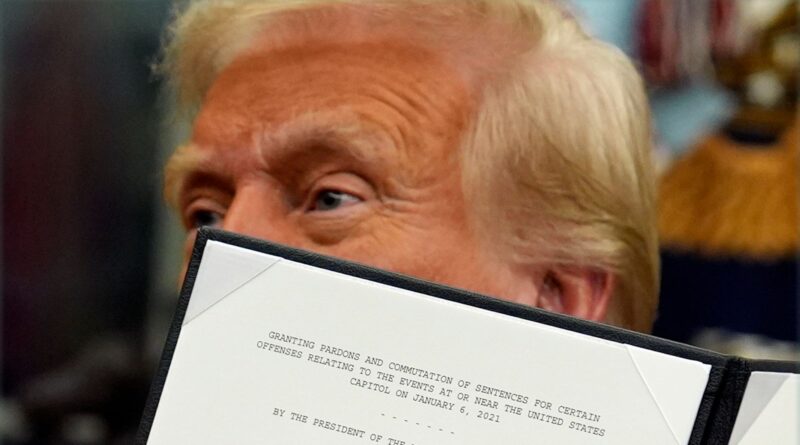Exploring Executive Orders: Will Donald Trump’s Recent Actions Be Effective? | US News
On his inauguration day, Donald Trump issued over 100 executive orders.
It’s now common practice for new presidents to sign these orders soon after taking office – for instance, Joe Biden enacted 17 on his first day.
These orders are often viewed as one of the president’s most potent methods for implementing change, carrying the same weight as legislation while avoiding the need for approval from both Houses of Congress.
Trump’s new presidency: What to expect
Trump’s executive actions on inauguration day included declaring a national emergency at the US-Mexico border, eliminating birthright citizenship for migrant children, and withdrawing the US from both the Paris Climate Agreement and the World Health Organization.
However, executive orders do have limitations and can face legal challenges.
What are executive orders – and how do they function?
Executive orders represent formal directives from the president regarding how federal agencies, including government departments and the FBI, should allocate resources.
These orders are rooted in Article II of the Constitution, which asserts, “The executive power shall be vested in a president of the United States of America.”
In essence, they allow the president to guide the operation of the federal government.
Learn more
A comprehensive listing of Trump’s executive orders from inauguration
A wave of orders set to transform the US landscape
Reasons behind Trump’s decision to withdraw from the WHO
These orders can manifest in various ways, such as outlining significant policies, soliciting formal reports, or granting federal employees time off for holidays.
As commander-in-chief, the president can also leverage them to influence military operations.
When do they take effect?
The timing for implementation varies based on the specifics of the order and the necessary actions to fulfill the president’s goals.
Orders that are straightforward and encounter no opposition can be enacted immediately.
For example, one of Trump’s recent orders pardoned all individuals involved in the January 6 riots, mandating the immediate release of those still incarcerated in federal facilities.
Conversely, orders requiring additional clarification or that are inherently complex may take longer to execute.
An instance from Monday involved an order directing agencies to “address the cost-of-living crisis”.
Orders that outlast a presidential term frequently get reversed by the subsequent president; many of Trump’s initial orders aimed to counteract actions taken by President Barack Obama, while Biden reversed a number of Trump’s initiatives, and so forth.
Is it possible to overturn them?
Both Congress and the judiciary can hinder executive orders, though this is not an absolute right.
For instance, Congress can enact laws to nullify orders, but these can be vetoed by the president.
Additionally, Congress has the authority to withhold necessary funding.
Nevertheless, opposition from Congress may be less probable this time, given that the Republican Party controls the House, Senate, and the presidency.
👉 Follow Trump 100 on your podcast app 👈
Executive orders are intended to operate within legal boundaries, meaning they may be subject to judicial review.
State officials, advocacy groups, and other bodies can contest an executive order if they demonstrate that the president has overstepped his authority or violated the Constitution.
For instance, during the Korean War, the Supreme Court prevented President Harry Truman from seizing steel mills, arguing he lacked the authority to appropriate private assets without Congress’s approval.
Will Trump’s recent orders encounter opposition?
Many of Trump’s latest executive orders are quite contentious.
While he may find less political opposition due to Republican dominance in Congress, civil rights organizations and Democratic attorneys general have already indicated they will initiate legal action.
For example, legal complaints were filed almost immediately after Trump officially announced the formation of his new Department of Government Efficiency (DOGE), which is set to be headed by Elon Musk.
Challenges against the revocation of Biden’s policies are less likely to succeed, as those policies were legally ratified during his administration.
However, opposition groups may find success against Trump’s administration when employing new and untested legal arguments, according to NBC News, affiliated with Sky’s US partner network.
One controversial order involves rescinding birthright citizenship for children whose parents lack permanent residency or US citizenship.
Birthright citizenship is established by the 14th Amendment of the Constitution, which specifies that it applies to anyone “subject to the jurisdiction” of the United States.
Trump’s executive order claims this does not extend to undocumented migrants; however, legal experts assert that the definition only excludes those who are not subject to US law, such as foreign diplomats.
Additionally, Trump’s attempt to invoke the Alien Enemies Act, part of the Alien and Sedition Acts of 1798, gives the president the authority to detain or deport foreign nationals during wartime—previously applied during World War II.
However, Trump’s order is unlikely to stand up in court since the US is not currently at war.






